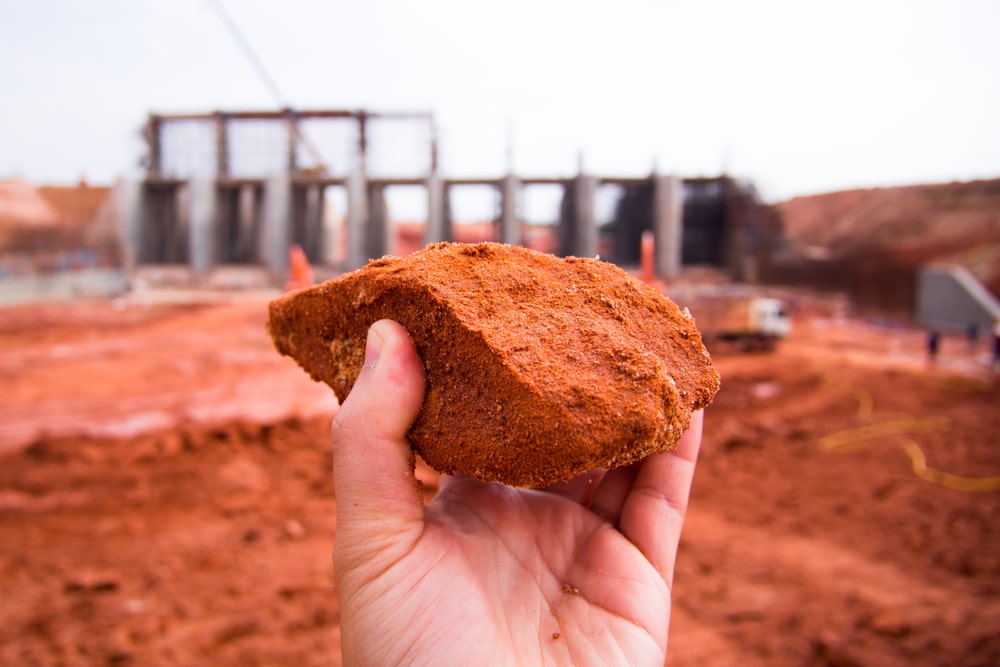Some Ideas on Geotheta You Need To Know
Examine This Report on Geotheta
Table of ContentsGeotheta Fundamentals Explained8 Easy Facts About Geotheta ShownGetting The Geotheta To Work6 Simple Techniques For GeothetaThe Main Principles Of Geotheta

They conduct website investigations, gather samples, perform laboratory tests, and assess data to review the suitability of the ground for building jobs - Engineer of Record. Based on their searchings for, geotechnical designers provide referrals for structure style, slope stability, preserving frameworks, and reduction of geotechnical hazards. They work together with other professionals, such as engineers, architectural designers, and building groups, to ensure that geotechnical factors to consider are incorporated into the general job style and execution
By assessing the habits and residential properties of dirt and rock, they can recognize possible geotechnical hazards such as landslides, dirt negotiation, or slope instability. Their proficiency helps protect against failures or accidents that can jeopardize lives and building. Below are some comprehensive obligations and duties of a geotechnical designer: Website Investigation: Geotechnical designers conduct site examinations to collect information on subsurface problems.
They translate the data to comprehend the buildings and behavior of the dirt and rock, including their strength, leaks in the structure, compaction characteristics, and groundwater problems. Geotechnical Analysis and Design: Geotechnical engineers evaluate the data collected throughout site investigations to evaluate the stability and viability of the website for building projects. They carry out geotechnical estimations and modeling to assess elements such as birthing capability, negotiation, slope stability, lateral earth stress, and groundwater circulation.
10 Simple Techniques For Geotheta
Structure Design: Geotechnical engineers play an essential function in creating foundations that can safely sustain the desired framework. They assess the soil problems and lots demands to determine the suitable structure kind, such as shallow foundations (e.g., footings), deep foundations (e.g (https://my-store-fc66c1.creator-spring.com/)., stacks), or specialized methods like soil improvement. They think about elements such as negotiation limitations, birthing capacity, and soil-structure communication to create optimal foundation designs
They review building and construction strategies, monitor site activities, and perform field assessments to confirm that the design suggestions are followed. If unpredicted geotechnical issues occur, they analyze the scenario and offer recommendations for removal or adjustments to the layout. Risk Evaluation and Reduction: Geotechnical designers analyze geotechnical risks and risks connected with the task site, such as landslides, liquefaction, or soil disintegration.

Partnership and Communication: Geotechnical engineers function closely with various other experts included in a project, such as designers, architectural engineers, and construction teams. Reliable interaction and collaboration are important to integrate geotechnical considerations into the total project layout and building process. Geotechnical engineers supply technical competence, response inquiries, and guarantee that geotechnical requirements are fulfilled.
About Geotheta
Right here are some kinds of geotechnical designers: Structure Designer: Foundation engineers focus on creating and evaluating structures for frameworks. They assess the dirt problems, lots requirements, and site features to establish one of the most appropriate structure type and layout, such as superficial structures, deep structures, or specialized methods like stack structures.
They evaluate the elements influencing slope stability, such as dirt residential properties, groundwater conditions, and slope geometry, and establish approaches to avoid slope failings and mitigate threats. Quake Engineer: Quake engineers specialize in analyzing and developing frameworks to stand up to seismic pressures. They examine the seismic danger of a site, review soil liquefaction potential, and create seismic layout standards to guarantee the safety and security and strength of frameworks throughout earthquakes.
They execute field screening, collect examples, and analyze the accumulated information to define the soil buildings, geologic formations, and groundwater conditions at a website. Geotechnical Instrumentation Engineer: Geotechnical instrumentation designers focus on monitoring and measuring the actions of soil, rock, and structures. They mount and preserve instrumentation systems that monitor variables such as dirt negotiation, groundwater degrees, slope motions, and architectural displacements to assess efficiency and offer early cautions of prospective issues.
Facts About Geotheta Uncovered
They conduct tests such as triaxial tests, debt consolidation examinations, straight shear tests, and leaks in the structure tests to gather information for geotechnical analysis and layout. Geosynthetics Designer: Geosynthetics engineers concentrate on the layout and application of geosynthetic products, such as geotextiles, geogrids, and geomembranes. They use these products to boost soil stability, strengthen slopes, provide water drainage remedies, and control disintegration.
They tend to be investigative people, which implies they're intellectual, introspective, and analytical. They wonder, methodical, sensible, logical, and rational. Some of them are likewise social, implying they're kind, charitable, cooperative, client, caring, helpful, compassionate, skillful, and friendly. Does this sound like you? Take our free job test to locate out if geotechnical engineer is just one of your top career suits.
In the workplace setting, geotechnical engineers utilize specialized software application devices to perform estimations, develop designs, and examine data. They prepare records, evaluation job specifications, communicate with customers and staff member, and coordinate task activities. The workplace setup provides a conducive atmosphere for research, evaluation, and collaboration with other professionals associated with the project.
The smart Trick of Geotheta That Nobody is Talking About
They often go to job sites to conduct site examinations, examine geotechnical conditions, and collect information next page for analysis. These brows through include taking a trip to different areas, often in remote or challenging surfaces. Geotechnical designers might do soil tasting, conduct examinations, and monitor building tasks to ensure that the geotechnical facets of the project are being applied appropriately.
Geotechnical designers additionally function in specialized geotechnical research laboratories. Geotechnical laboratory designers work extensively in these environments, taking care of testing equipment, operating instruments, and tape-recording data.